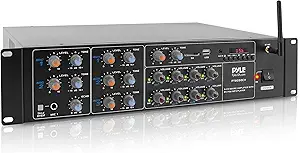
- Product Selection (3.4)
- Availability (4.2)
- Design/Look (3.9)
- Affordability (4.9)
- Quality/Durability (3.4)
- Reputation (3.8)
- Customer Support & Warranty (3.3)
- Sound Quality (3.6)
- Connectivity & Features (3.8)
Sony AV Receivers
In the realm of home entertainment, the heart of a truly immersive experience lies within the audio-visual (AV) receiver. Among the myriad of options available, Sony AV receivers stand out as beacons of innovation, performance, and reliability. In this article, we delve into the realm of Sony AV receivers, uncovering what makes them exceptional, their unique features, advantages, disadvantages, and why they deserve a place in your home theater setup.
Sony AV receivers serve as the nerve center of your home entertainment system, designed to decode, amplify, and distribute audio and video signals with precision and clarity. Infused with cutting-edge technology and decades of audio expertise, Sony receivers deliver an unparalleled audio-visual experience that captivates the senses and transports you into the heart of the action.
Connectivity Options
Sony's AV receivers are renowned for their extensive connectivity options, incorporating the latest technologies to ensure seamless integration with a variety of devices. The brand's models typically include multiple HDMI inputs and outputs, USB ports, and digital audio inputs. For wireless connectivity, many Sony AV receivers are equipped with Bluetooth, Wi-Fi, and AirPlay capabilities, allowing for easy streaming from smartphones, tablets, and computers. Some models also support multi-room listening through Sony's Music Center app, providing a convenient way to control and distribute audio throughout the home. However, while Sony's AV receivers offer robust connectivity, they do not always support the latest HDMI standards, such as eARC or HDMI 2.1, which could be a drawback for those looking to future-proof their home theater setup. In comparison, brands like Denon and Marantz often include these features in their AV receivers. Nevertheless, Sony's connectivity options are generally reliable and versatile, making them a strong choice for those seeking to connect a wide range of devices.
Pyle AV Receivers
If you're in the market for budget-friendly audio equipment, Pyle is a brand worth exploring. Founded in 1960, Pyle has established itself as a provider of cost-effective audio solutions, catering to a wide range of users from casual listeners to those seeking basic home theater setups. While Pyle may not carry the same prestige as some of its competitors, it offers a variety of products designed to meet the needs of everyday consumers. Let’s delve into what Pyle has to offer in the world of AV receivers.


















